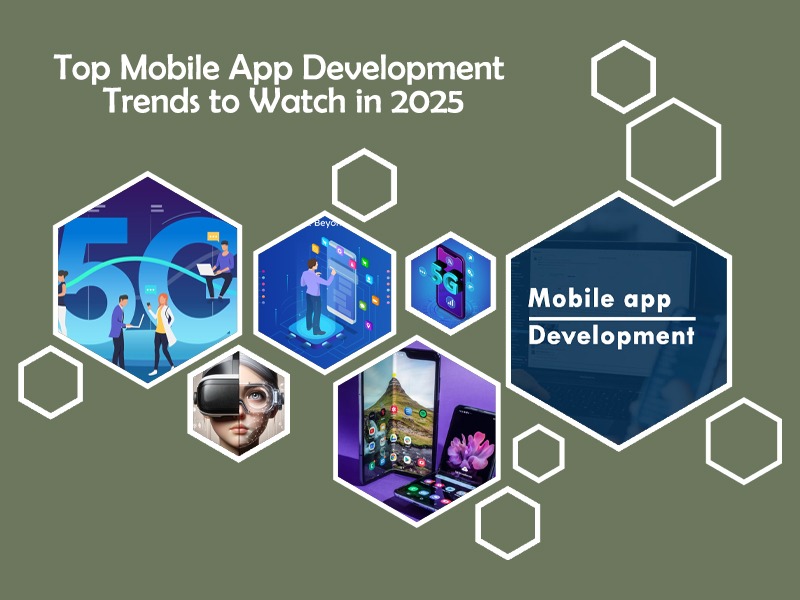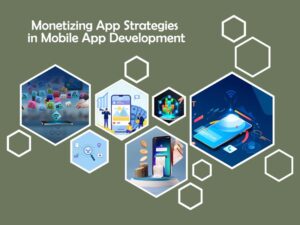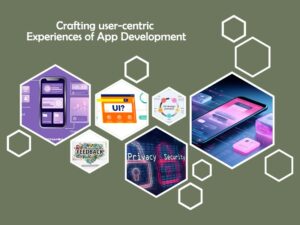Top Mobile App Development Trends to Watch in 2025?
In 2025, several trends are expected to influence mobile app development, given the technological abetments and user expectations. The first one is the integration of 5G which provides users with better rates, less latency, and deeper experience in such applications as AR/VR and cloud gaming.
Mobile applications are the new for businesses to tap into perfect links with clients and potential customers. Through the channel of interactive communication and increased uptake of new products and services, mobile apps have taken the role of marketing strategies. You must know the present and future trends to get the benefits in their fullest measure. Here is a brief overview of what articles of this type contain.
The first step forward is to ensure that one gets to know about other future mobile app development trends, thus making your mobile app a success. Now let’s take a closer look at some of the latest trends we have mentioned above.
Mobile App Development Trends
Despite many new trends happening this year for mobile app development, here are the mobile app development trends that we derived after detailed, empirical study.
5G technology
5G is a highly progressive development in mobile communications promoting better and upgraded data speed, less latency, and connectivity. 5G is already seen as the fifth generation of wireless technology that will be aimed at helping meet the growing global need for applications. It requires large amounts of data such as streaming services, gaming, and the Internet of Things (IoT).
In addition to the consumer/application perspective, 5G is believed to foster business and industrial evolution for enhanced communication networks. The growth of 5G networks will also play a part in making the gap between the urban and the rural regions in terms of slow internet connection. Which in turn will transform industries as well as affect each person’s daily life.
What does the rise of 5G mean for App Development?
Fast data connection, low latency, and improved connectivity are some benefits within the app development procedure as a result of the 5G. Due to the improved speed, 5G allows developers to make applications that require a large amount of data as well as real-time interaction. It does not bring up problems with load, for instance, applications based on Augmented Reality or Virtual Reality and cloud gaming.
Reduced latency provides smoother and more immediate interactions and can be of particular value for applications that rely on real-time feedback such as telemedicine, live broadcasting, and applications that integrate Internet of Things technology. Moreover, since 5G has higher reliability, its network conditions do not need to be optimized for slower networks, opening up the potential for innovations that will produce a higher quality and enhanced user experience.
It also favors edge computing, meaning that applications can process data much closer to users for even better results.
Apps for Foldable Devices
As flexible devices emerged, it is obvious that the application can equally extend to changing their shape and size. Some mobile devices such as the Samsung Galaxy Z Fold, or Huawei Mate X design feature two screens or a flexible screen and this setup gives users a more exciting and practical feel. These devices can pivot in various forms of a structure, for example, a folded state (minimal size) or an unfolded state (larger size), which presents new opportunities in the design of applications.
When it comes to the layout and the interface of an app developers are supposed to work on the layouts in a way that is compatible with the screen size as well as the screen orientation. For instance, it is expected that in the course of the transition from the single-window mode to the multi-window mode, applications should be easy to navigate. In designs, apps should use the extra space provided by the larger screens either to accommodate more content or increase the level of multitasking possible.
There are also options to allow developers to enable drag-and-drop capabilities between windows, as well as allow app optimization for split screens. This flexibility in design enables more depth-rich user interaction and therefore offers features that are useful, engaging, and efficient on Foldable, be it work, play, or multimedia entertainment.
Augmented Reality (AR) and Virtual Reality (VR)
Augmented Reality (AR) and Virtual Reality (VR) are novel technologies revolutionizing how an end-user interfaces with a digital object. AR places virtual data over the live environment and comprises aspects such as graphics, animation, or text that should be added to the physical environment. Some examples include effects for faces on Facebook or Instagram or Pangolin and MAs happen for navigation using Google Maps’ live view feature that overlays actual physical location with a virtual one.
However, VR offers participants a completely simulated environment, being fully immersed and having no physical world presence. VR head-mounted displays use wearables such as Oculus Rift or HTC Vive through which users can play games, train, or just be immersed in a story.
Both have unimaginable uses outside the entertainment fields; these include; education, health, business such as real estate, and even remote working. For instance, AR can be utilized in medical education and maintenance, whilst VR can be employed more in property viewing, or training simulators. As these technologies advance, they present new approaches to acting as a touchpoint to the customer in multifaceted industries.
Wearable App Integration
Wearable app integration refers to building software applications that are compatible with wearable gadgets to sync with other consumer electronic gadgets like smartwatches, fitness trackers, or augmented reality glasses. These apps are meant to assist devices that can deliver data and notifications in real-time for a wearer, or perform tasks like measuring a person’s health, answering phone calls, or remotely controlling other smart appliances.
For developers, therefore, it is crucial to work the app design so that it only fits a small screen and that it synchronizes well with smartphones and cloud services. This is because wearable app integration makes the user experience more tailored to their needs. Whether it’s tracking their physical activity levels, making payments, or controlling their devices without having to put their work aside. Improving day-to-day efficiency by incorporating useful technologies into wearable devices.
Mobile Entertainment & Gaming
Games and entertainment are undeniably the two main focuses where mobile technologies play an important role in creating an entertainment lifestyle in the hands of many users. In recent years improvements in mobile technology such as new graphics, better processors, and high-speed internet such as 5G, have made mobile devices capable of delivering quality entertainment. Mobile has available information products in a variety of categories that include video, audio, games, and social sites among others.
Especially the mobile gaming industry has exploded and people all over the world are playing games such as PUBG Mobile, Fortnite, Candy Crush, etc. Gamers are using technologies such as imaginations of reality virtual reality and augmented reality to make the game more sophisticated. To this end, we have observed that many modern games such as Pokémon GO or Minecraft Earth apply AR to superimpose virtual objects on the real environment.
Also, hybrid gaming applies to mobile games, where it offers the possibility of multiplayer and buying during the game. With integration capabilities with other platforms and with the growth of cloud gaming, mobile games remain one of the main trends in the consumption of entertainment and interaction.
Payment Gateways Solution
As the usage of such options increases, the immediate connection of mobile payment gateways and cryptocurrencies will be vital for many apps in such sectors as e-commerce, finance, and retail. In 2024, more safe and convenient payment solutions should also be expected.
Conclusion
As the usage of such options increases, the immediate connection of mobile payment gateways and cryptocurrencies will be vital for many apps in such sectors as e-commerce, finance, and retail. In 2024, more safe and convenient payment solutions should also be expected.
Such trends reveal the trends in mobile app development innovations, personalization, quickness, and engagement. These trends will enable businesses to provide new, state-of-the-art applications to fit new user demands in 2024 or further into the future.




